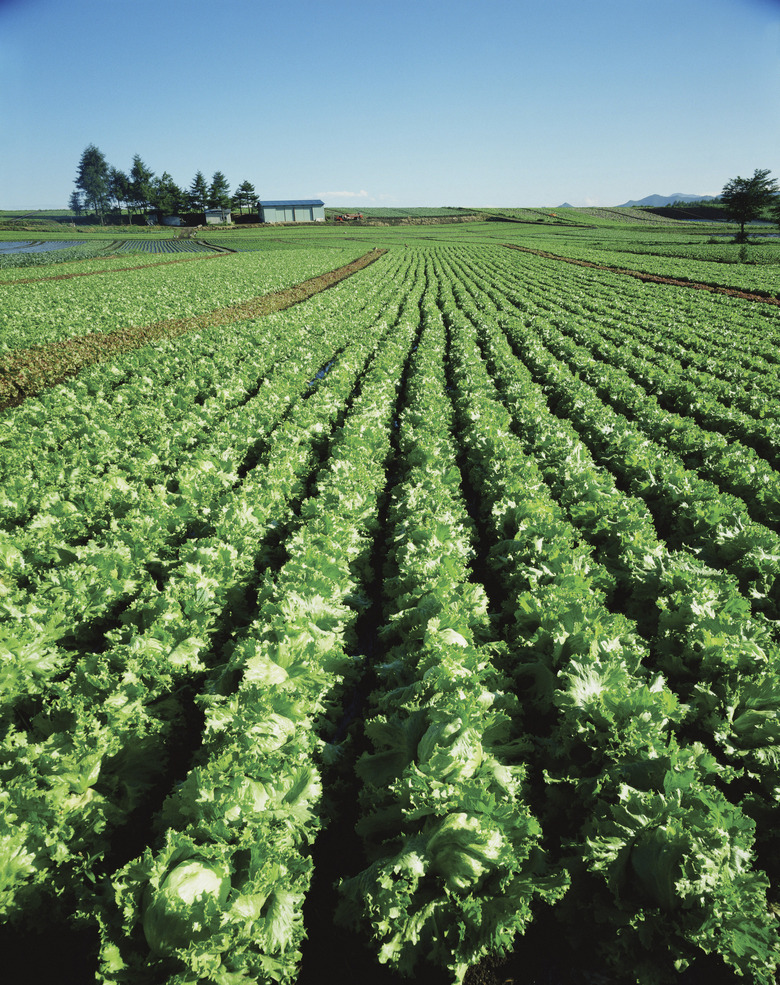How To Show A Percentage Increase Between Two Numbers
Percentage increase is one way to show how two totals compare — the percentage increase shows how much larger a final amount is from the initial amount. You can calculate percentage increase using two different methods that compare the initial and the final quantities of a number.
Subtraction Method 1: Calculate Change
Subtraction Method 1: Calculate Change
In the subtraction method, you first calculate the amount of change between the initial quantity and the final amount. Subtract the initial total from the final total to find the change.
Say you had 105 sheep last year and 127 sheep this year. To find the change, you subtract 105 and from 127:
127 – 105 = 22
So, the total of sheep you have has increased by 22 sheep. Note that if you get a negative number when you subtract the initial total from the final, you're dealing with a percentage decrease instead.
Subtraction Method 2: Divide and Multiply
Subtraction Method 2: Divide and Multiply
Now, you **divide the change by the initial total.** This will give you a decimal number. Your total changed by 22 sheep, and your initial number of sheep was 105. So, divide 22 by 105:
22/105 = 0.209
Multiply 0.209 by 100 to get the percent change:
0.209 x 100 = 20.9 percent
So, the number of sheep you have increased by 20.9 percent since last year. Note that if you get a negative percentage using this method, then your total has decreased by that percent, rather than increased.
Division Method 1: Divide New by Old
Division Method 1: Divide New by Old
In the division method, you don't calculate change through subtraction. Instead, you first **divide the final total by the initial total.** Say you ate at 43 restaurants last year and at 57 restaurants this year. You want to find the percent increase. You divide 57 by 43 to produce a decimal number:
57/43 = 1.326
So, your first step produces a result of 1.326.
Division Method 2: Convert to Percentage and Subtract
Division Method 2: Convert to Percentage and Subtract
Now, **multiply the decimal number by 100, and then subtract 100 from the product of this multiplication.** You got a result of 1.326 when you divided your new total by your initial. Multiply by 100:
1.326 x 100 = 136.6
Now, subtract 100 from this total to find the percent increase:
136.6 – 100 = 36.6 percent
So, the number of restaurants you ate at this year increased by 36.6 percent from last year. If the total you get from this method is negative, then it is a percent decrease rather than a percent increase.
References
Cite This Article
MLA
Zamboni, Jon. "How To Show A Percentage Increase Between Two Numbers" sciencing.com, https://www.sciencing.com/show-increase-between-two-numbers-7716688/. 24 April 2017.
APA
Zamboni, Jon. (2017, April 24). How To Show A Percentage Increase Between Two Numbers. sciencing.com. Retrieved from https://www.sciencing.com/show-increase-between-two-numbers-7716688/
Chicago
Zamboni, Jon. How To Show A Percentage Increase Between Two Numbers last modified March 24, 2022. https://www.sciencing.com/show-increase-between-two-numbers-7716688/
